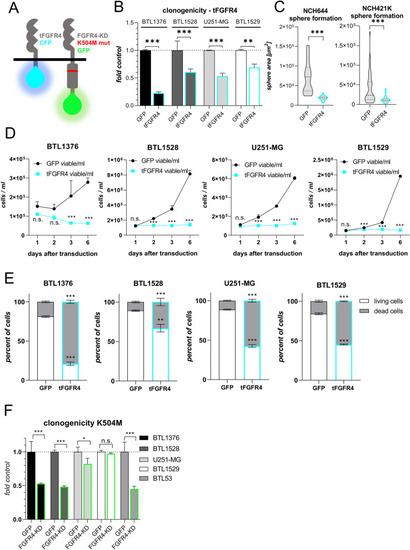Fig. 3
- ID
- ZDB-FIG-220505-48
- Publication
- Gabler et al., 2022 - Fibroblast growth factor receptor 4 promotes glioblastoma progression: a central role of integrin-mediated cell invasiveness
- Other Figures
- All Figure Page
- Back to All Figure Page
|
Inactivation of FGFR4 reduces proliferative capacity and promotes cell death. |

